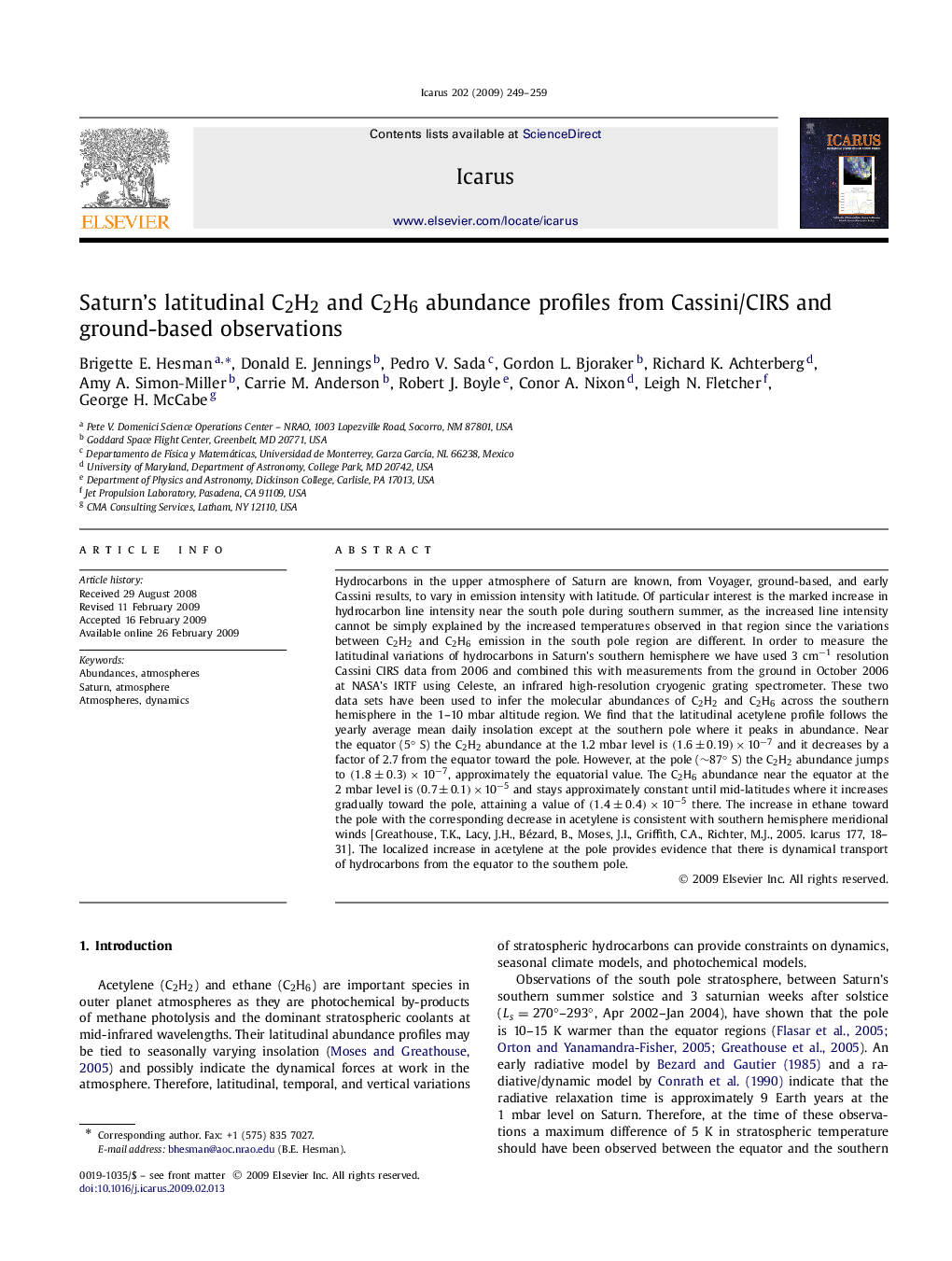| Article ID | Journal | Published Year | Pages | File Type |
|---|---|---|---|---|
| 1775113 | Icarus | 2009 | 11 Pages |
Hydrocarbons in the upper atmosphere of Saturn are known, from Voyager, ground-based, and early Cassini results, to vary in emission intensity with latitude. Of particular interest is the marked increase in hydrocarbon line intensity near the south pole during southern summer, as the increased line intensity cannot be simply explained by the increased temperatures observed in that region since the variations between C2H2 and C2H6 emission in the south pole region are different. In order to measure the latitudinal variations of hydrocarbons in Saturn's southern hemisphere we have used 3 cm−1 resolution Cassini CIRS data from 2006 and combined this with measurements from the ground in October 2006 at NASA's IRTF using Celeste, an infrared high-resolution cryogenic grating spectrometer. These two data sets have been used to infer the molecular abundances of C2H2 and C2H6 across the southern hemisphere in the 1–10 mbar altitude region. We find that the latitudinal acetylene profile follows the yearly average mean daily insolation except at the southern pole where it peaks in abundance. Near the equator (5° S) the C2H2 abundance at the 1.2 mbar level is (1.6±0.19)×10−7(1.6±0.19)×10−7 and it decreases by a factor of 2.7 from the equator toward the pole. However, at the pole (∼87° S) the C2H2 abundance jumps to (1.8±0.3)×10−7(1.8±0.3)×10−7, approximately the equatorial value. The C2H6 abundance near the equator at the 2 mbar level is (0.7±0.1)×10−5(0.7±0.1)×10−5 and stays approximately constant until mid-latitudes where it increases gradually toward the pole, attaining a value of (1.4±0.4)×10−5(1.4±0.4)×10−5 there. The increase in ethane toward the pole with the corresponding decrease in acetylene is consistent with southern hemisphere meridional winds [Greathouse, T.K., Lacy, J.H., Bézard, B., Moses, J.I., Griffith, C.A., Richter, M.J., 2005. Icarus 177, 18–31]. The localized increase in acetylene at the pole provides evidence that there is dynamical transport of hydrocarbons from the equator to the southern pole.
